NOW THAT’S WHAT YOU CALL VINTAGE! Scientists Extract DNA From World’s Oldest Cheese – Discovered On The Heads And Necks Of 3,600-Year-Old Chinese Mummies
A good vintage cheddar is an indispensable piece of cheese on any good cheese board.
But while most varieties mature for about 12 months, this is nothing compared to the oldest cheese in the world, which is 3,600 years old.
The ancient cheese was discovered in 2014 alongside mummies excavated in China.
Scientists have now extracted DNA from the cheese to reveal its key ingredients.
Their analysis shows that the ancient cheese was made from kefir, a trendy fermented milk drink that is excellent for gut health.
A good vintage cheddar is a staple on any decent cheeseboard. But while most varieties are aged for around 12 months, this pales in comparison to the world’s oldest cheese, which is 3,600 years old
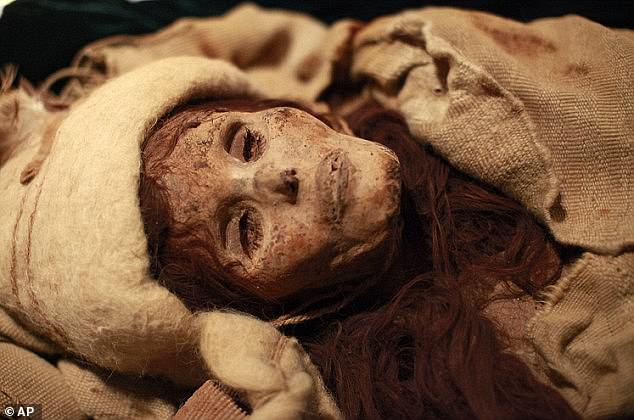
The ancient cheese was discovered in 2014 alongside mummies unearthed in China
About twenty years ago, a team of archaeologists discovered mysterious white substances on the heads and necks of several mummies found in the Xiaohe Cemetery in the Tarim Basin of northwest China.
These mummies date from approximately 3,300 to 3,600 years ago, from the Bronze Age.
At the time, scientists thought these substances were some kind of fermented dairy product, but they couldn’t identify exactly which kind.
Thanks to advanced DNA analysis, researchers have finally solved the mystery.
They identified DNA from cows and goats in the cheese samples and confirmed that the white substances were indeed kefir cheese.
The samples from three different graves contained species of bacteria and fungi including Lactobacillus kefiranofaciens and Pichia kudriavzevii, both of which are common in modern kefir grains.
Kefir grains are groups of microorganisms that contain several types of probiotic bacteria and yeast, which ferment milk into kefir cheese.
In addition to boosting the “good” bacteria in our gut, kefir is also believed to be good for bone health, lowering blood sugar levels and improving heart health.
“This is the oldest known cheese sample ever discovered in the world,” said Professor Qiaomei Fu, head of the Ancient DNA Laboratory at the Chinese Academy of Sciences.
‘Foods like cheese are incredibly difficult to preserve for thousands of years, so this is a rare and valuable opportunity.
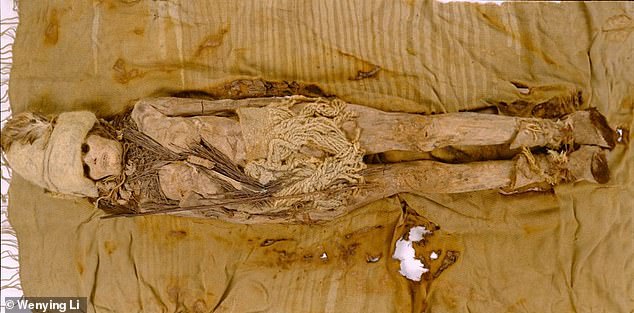
About twenty years ago, a team of archaeologists discovered mysterious white substances smeared on the heads and necks of several mummies found in the Xiaohe Cemetery in the Tarim Basin of northwest China.
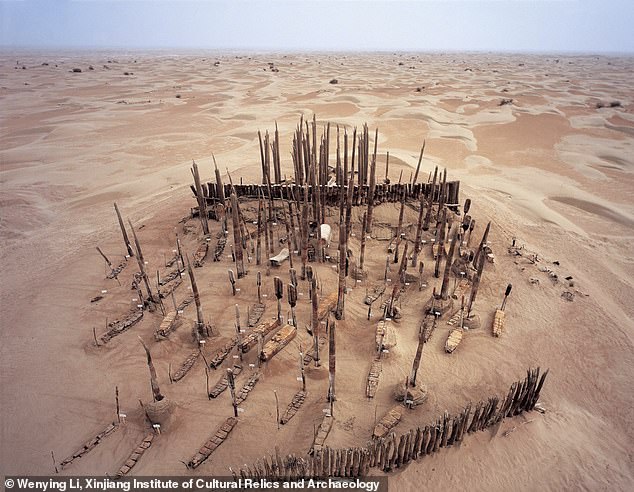
Pictured: An aerial view of Xiaohe Cemetery, where the mummies were found
‘By studying the old cheese in detail, we can better understand the diet and culture of our ancestors.’
By sequencing the bacterial genes in the ancient kefir cheese, the team was able to trace how probiotic bacteria have evolved over the past 3,600 years.
Their findings refute the long-held notion that kefir originates exclusively from the North Caucasus region of Russia.
In contrast, they argue that kefir culture has been maintained in the Xinjiang region of northwestern China since the Bronze Age.
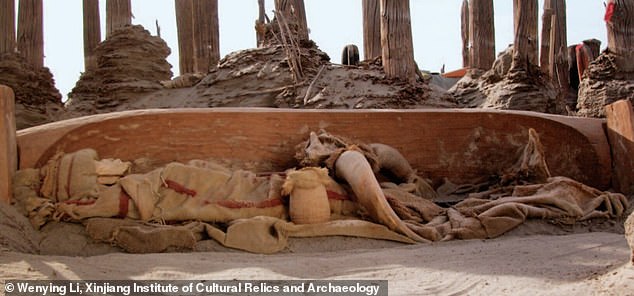
Two hundred mummies were discovered in the 1930s by Swedish archaeologists in the Taklimakan Desert north of Tibet
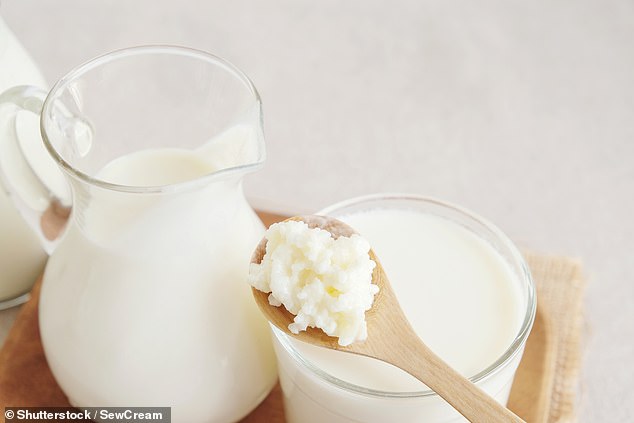
Today, kefir products include drinks, yogurts, and ice cream (stock image)
The study also found that modern varieties, compared to ancient kefir bacteria, are less likely to trigger an immune response in the human gut, making them easier to digest.
“This is a unique study, which allows us to observe how a bacterium has evolved over the past 3,000 years,” said Professor Fu.
‘By studying dairy products, we have gained a clearer picture of ancient human life and the interactions between humans and the world.’
Today, kefir products include drinks, yogurt, and ice cream.
The findings were published in the journal Cell.
